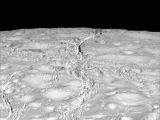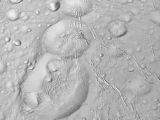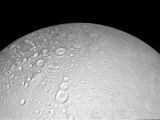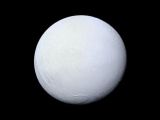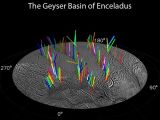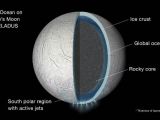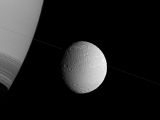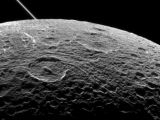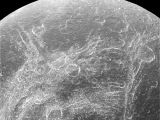This past Wednesday, October 14, NASA's Cassini spacecraft, launched back in 1997 and orbiting the Saturn system since 2004, completed a flyby of Encedalus, the planet's sixth-largest moon.
The probe came as close as 1,142 miles (1,839 kilometers) to the satellite's surface and imaged its north polar region in exquisite detail. High-resolution close-ups of landscapes imaged by Cassini during this flyby of Enceladus were released by NASA earlier today and are available in the gallery below.
Mission scientists say the spacecraft will continue to send images and research data from the encounter in the days to come, so we can expect the agency will soon share more views of this moon of Saturn.
Enceladus is a strange, icy world
These latest images delivered by NASA's Cassini probe show that, apart from the craters previously identified by the agency's Voyager mission, the north polar region of Enceladus also displays a network of cracks. In some cases, these cracks extend well into the craters.
While such fractures on Enceladus are not exactly a novelty, missions scientists admit they were quite surprised to find that they are present in the orb's norther region as well.
“The northern regions are crisscrossed by a spidery network of gossamer-thin cracks that slice through the craters. These thin cracks are ubiquitous on Enceladys, and now we see that they extend across the northern terrains as well,” explains researcher Paul Helfenstein.
Cassini is scheduled to complete another flyby of the moon on October 28, when it will come within just 30 miles (49 kilometers) of its surface and study its south polar region.
This moon of Saturn hides an ocean
About a month ago, researchers announced the discovery of a mammoth ocean hiding just under the icy crust that makes up the orb's surface. This hidden ocean explains the geysers seen stemming from the moon and the jets of infinitesimal particles shooting into space from it.
If this ocean lurking under the surface of Enceladus is made up of liquid water, then perhaps it could also be life-friendly. That's right, it could be that there is alien life sitting around waiting to be discovered on this moon of Saturn.
During its October 28 flyby of the orb, the Cassini spacecraft will probe the icy sprays darting from the moon's south polar region and analyze their chemistry to try and determine the composition of the hidden ocean fueling them. Perhaps it will also find evidence of life.
“Mission scientists are hopeful data from that flyby will provide evidence of how much hydrothermal activity is occurring in the moon's ocean, along with more detailed insights about the ocean's chemistry - both of which relate to the potential habitability of Enceladus,” NASA says.
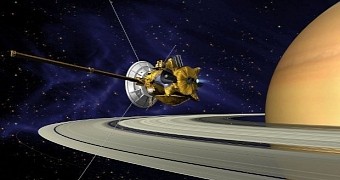
 14 DAY TRIAL //
14 DAY TRIAL // 

